
IT WAS 40˚C IN THE SHADE. Luckily we had some. My Russiaustralian travel-mate Sasha and I sheltered beneath a short, wide tree. Around us, sun-baked fields struggled to grow. It’s like the plants were hesitating to grow any nearer to that scorching fireball in the sky.
On one side of us was a single-speed bicycle – from an era before they were cool. On the other side of us, its owner: an old farmer. Sasha gently asked him questions, but mostly we just listened. “This was once an enormous fruit-growing region,” he said, as he swept his hand across our view. “Back in Soviet times, there were orchards in every direction.”
I learned that those orchards probably flourished because the plentiful irrigation maintained well with good infrastructure by the Russians who lived here. Today, the equipment, the water and the Russians are gone. After the fall of the Soviet Union, the thousands of ethnic Russians living here sought better prospects elsewhere – Kazakhstan or Russia. They also fled the various waves of Uzbek nationalism that swept the country in the past decades. “There’s not one left in the whole region,” he told us.
Sasha and I tugged on the irrigation thread. We were on our way to see the Aral Sea, after all – the fourth largest lake in the world – at least, as of 1960.
The farmer described his childhood. He would often swim in the Aral. Today, nobody does. The whole situation has been described as “one of the worst man-made environmental disasters in history.” And though the disappearance of the water is just the tip of an iceberg (of disaster), it’s only this tip I can show you in my photos. The rest of this disasterberg includes so much more:
- A region’s livelihood destroyed. Moynaq once had the largest fish processing factory in the USSR. In 1968, the sea disappeared over the horizon;
- Human rights abuses. NGOs report that thousands of people each year including doctors, teachers, farmers and (until recently) even children are forced into harvesting cotton – aka ‘white gold’ – to generate income for the government;
- Devastated agriculture. Sand and salt blow across a 300km wide region – the vast plain where the sea once stood – depositing onto grazing land and crops; And
- Diseases including throat cancer at a rate triple the nation’s average. The pesticides, fertilisers, and other industrial toxins of the region are made airborne in the now-frequent dust storms.
Perhaps then you’re glad not to see it all. I didn’t learn most of this until after my visit – hence why I appear to be having so much fun in the 3 photos Sasha took of me that I’ve included in this photo-essay.
These photos document our short visit to Moynaq – a single afternoon, and night camping in the former bed of the Aral Sea. Our campsite, circa 1960, was under 20 metres of water. We were instead drowning in swarms of sand flies and other nocturnal insects. I cursed the inhospitable place the area had become since its heyday as a jewel in the USSR. Back then, it even enjoyed a lakeside microclimate. Now the sea is 200km away, reduce to 8% of its original volume. And never coming back.
THE CASUALTY LIST of the Aral Sea story includes the physical, the agricultural, and the biological. But what about the emotional? There are still many people in Moynaq who remember the sea and its fishing fleets. I wonder how it feels to watch helplessly as your native ecosystem changes around you, in one lifetime, from Earth to Mars.
[Click any photo to view full-screen]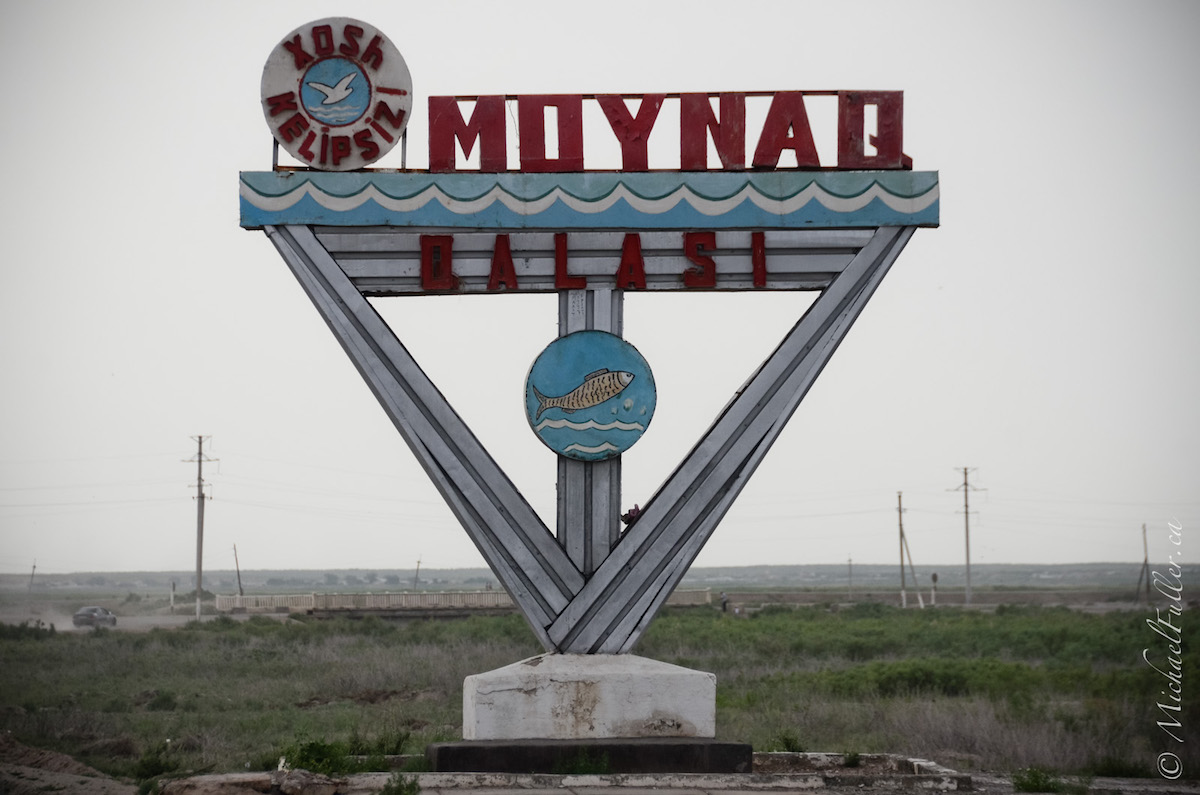
The sea-themed welcome sign on the edge of town stands like a fish out of water. A tragic juxtaposition; it's almost mocking.
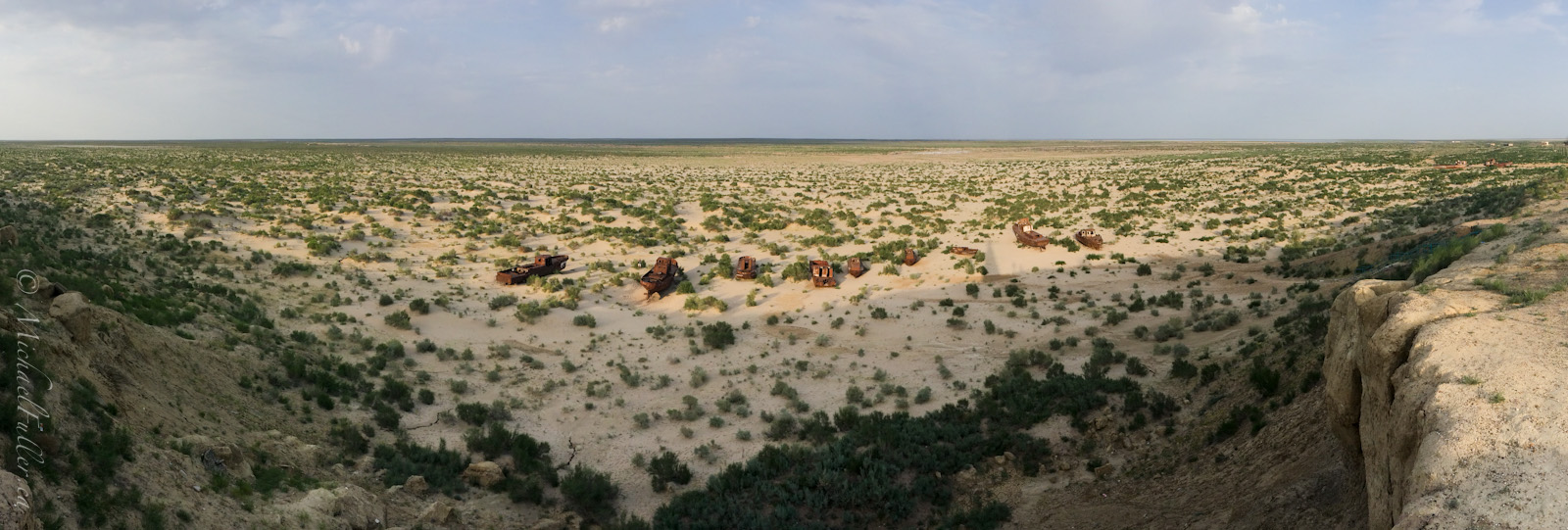
The sun sets on the last fleet of fishing trawlers. The tiny fraction of a sea that remains today lies 200km over the horizon.

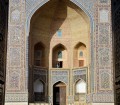

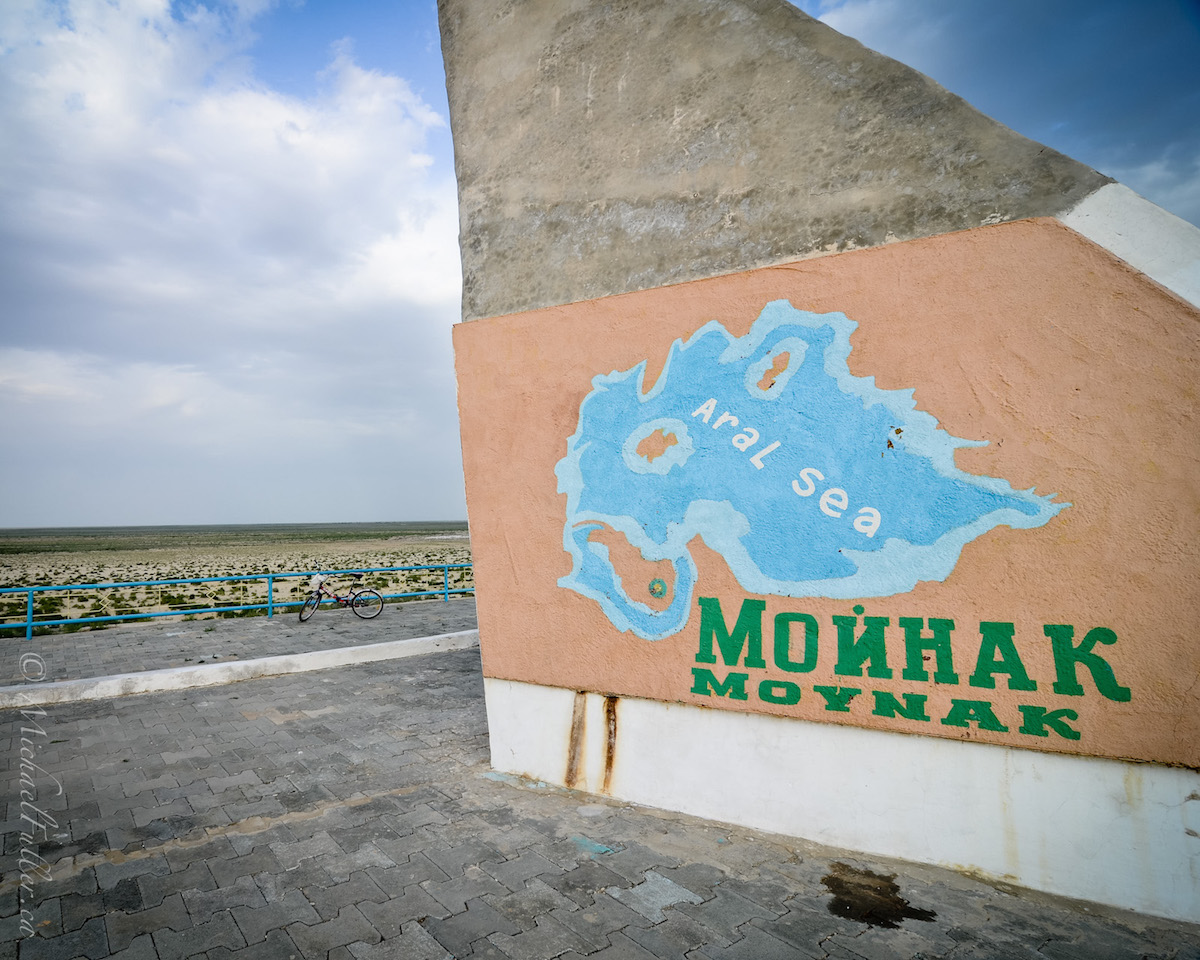
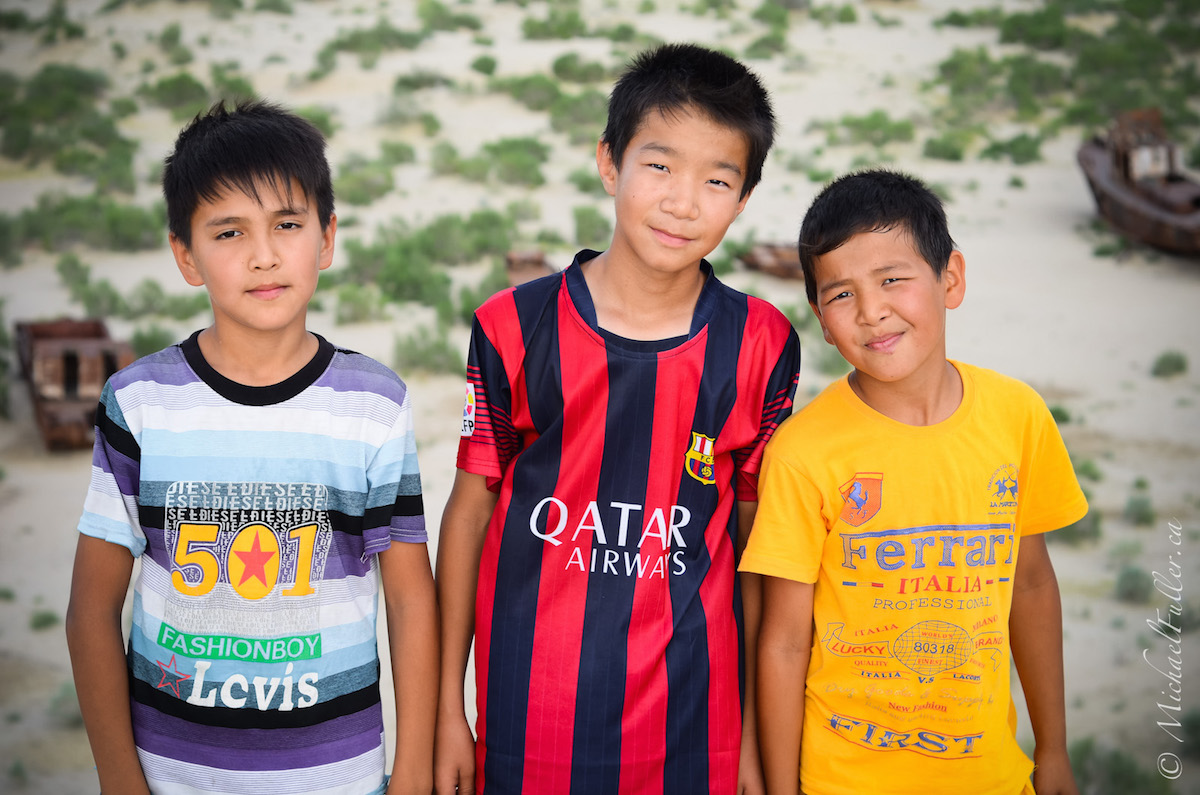

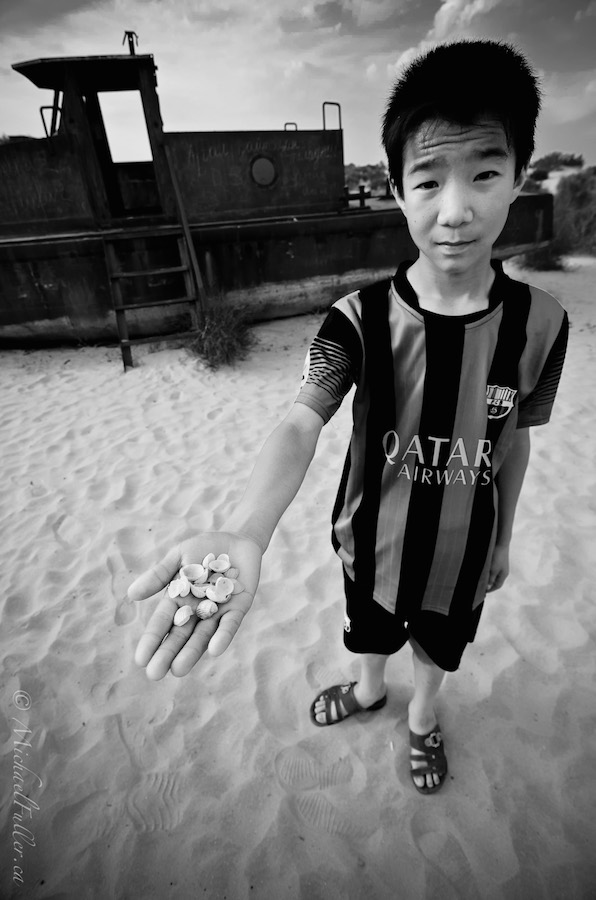
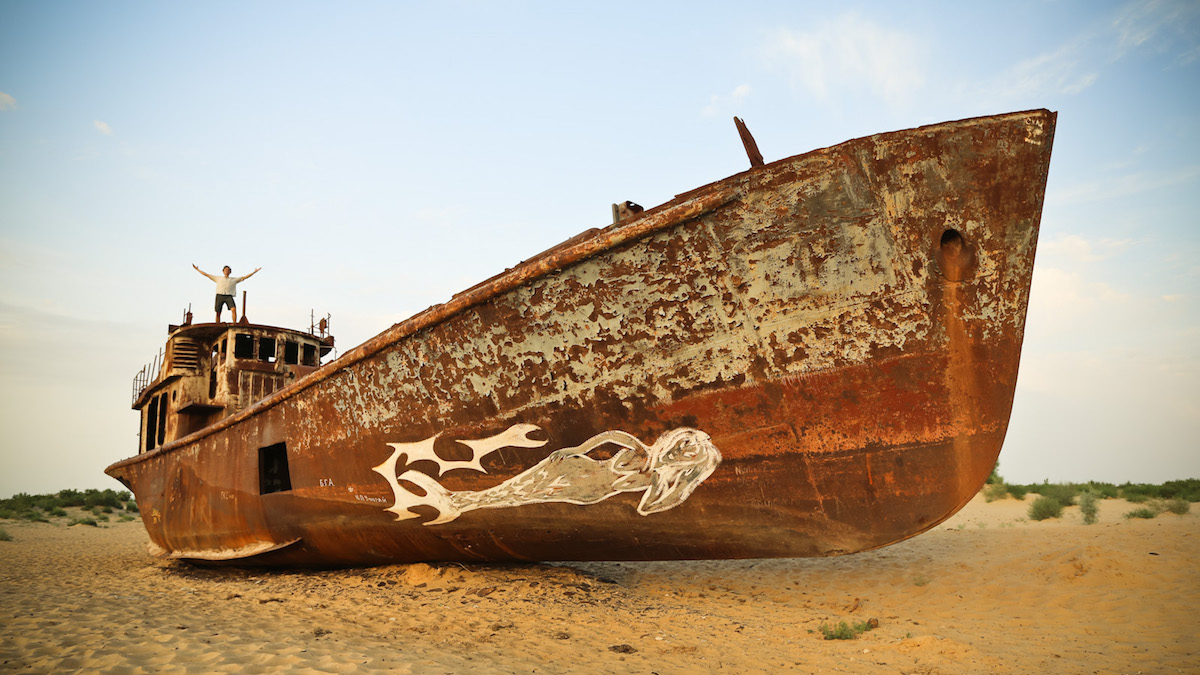
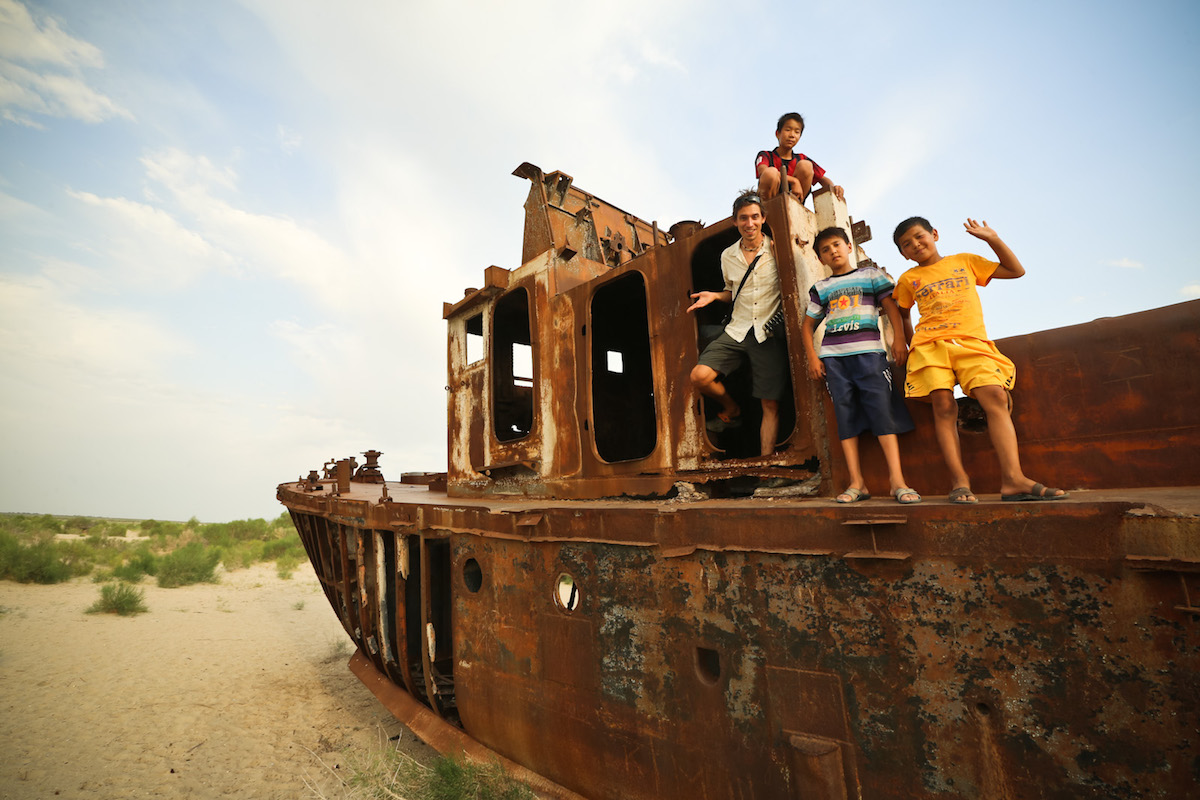

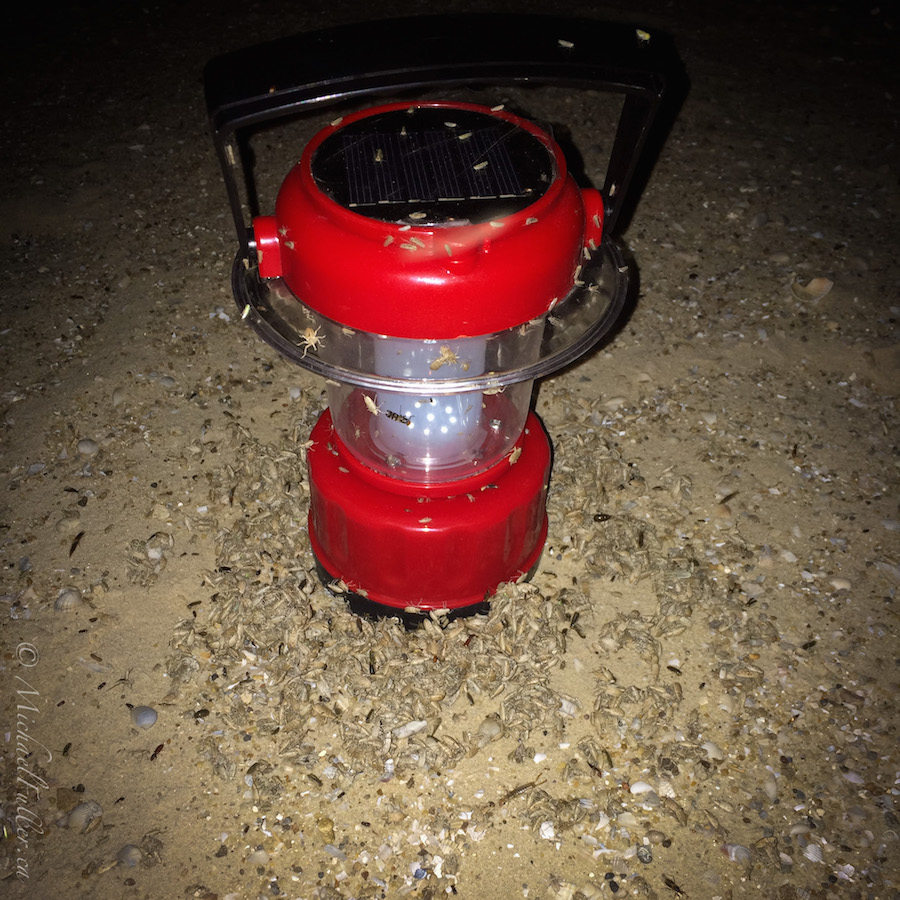



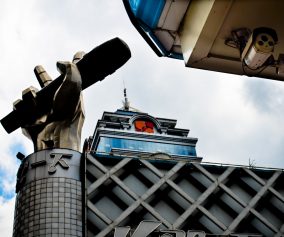
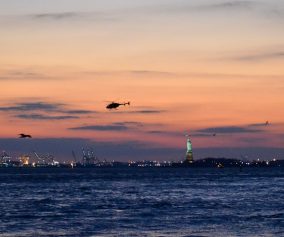

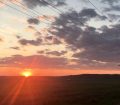

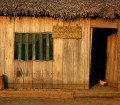
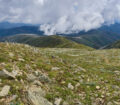




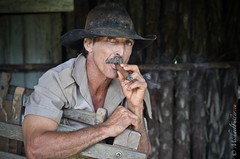

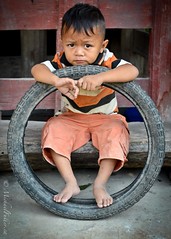
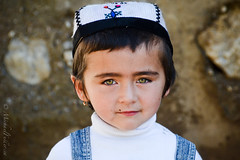

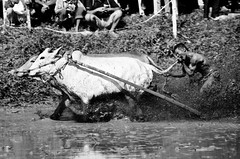

Hey Mike, was it difficult to reach the place? I heard the public transport doesn’t even go to Moynaq…
Zivile, sorry I missed this comment earlier: It was not difficult to reach because Sasha had his own car and I was his co-pilot. The hard (normal) way to reach Moynaq is to first get to Nukus; then find some friends and get a taxi to bring you there and back.
There’s defo no traditional public transit options.